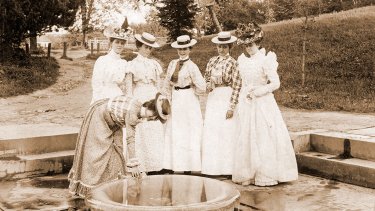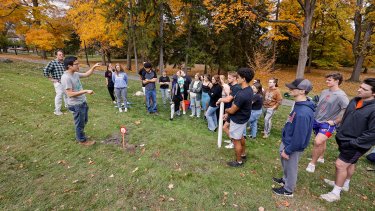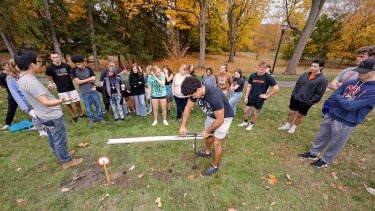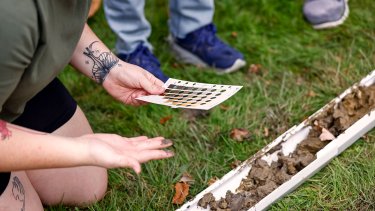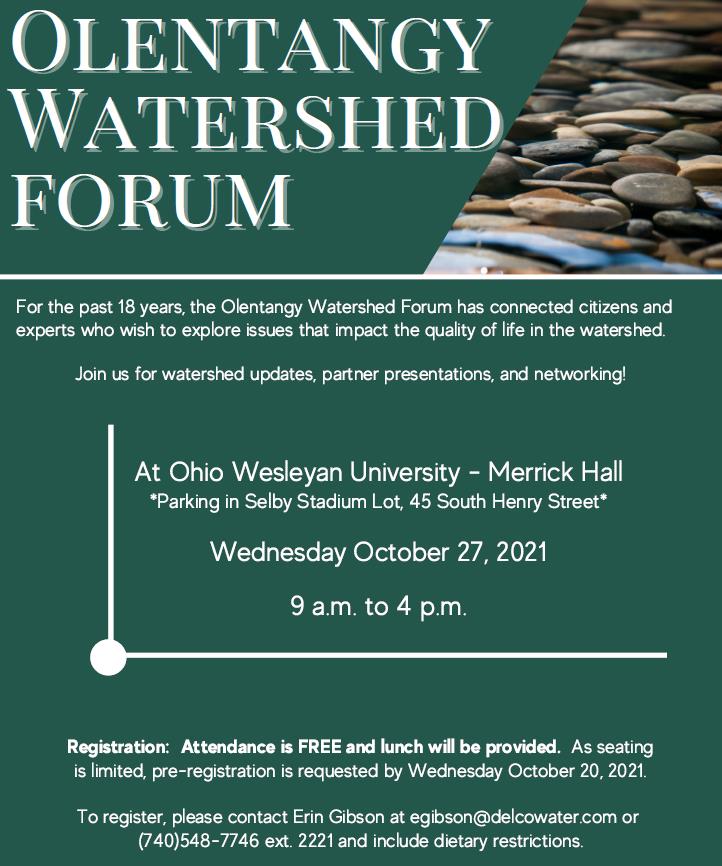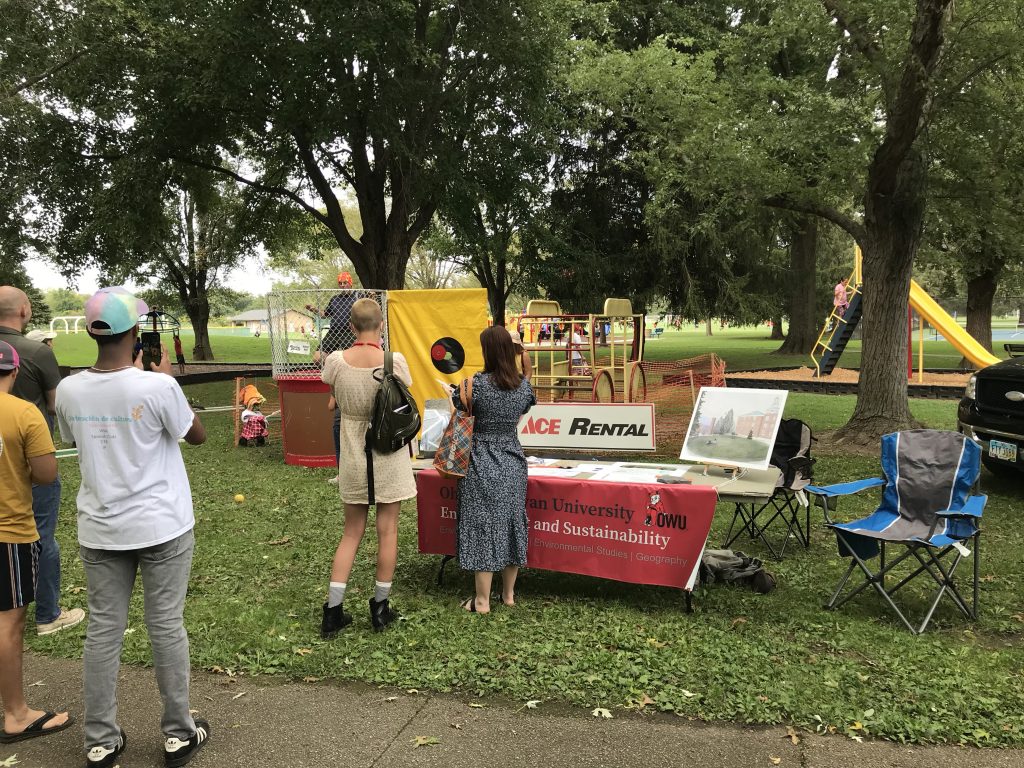
The Sulphur Spring
Ohio Wesleyan Students Dig Into OWU History to Understand Status of Underground Waterway
By Cole Hatcher
When Katsutoshi “Toshi” Mizuta says he and his Ohio Wesleyan University students are digging for clues, he means it literally.
Using a handheld auger, Mizuta, Ph.D., and students in his two Environment & Sustainability 111 courses recently excavated and examined soil from an OWU hillside south of the Delaware Run. Mizuta, who joined Ohio Wesleyan in August, is an expert in soil health, climate-smart agriculture, and ecosystem services.
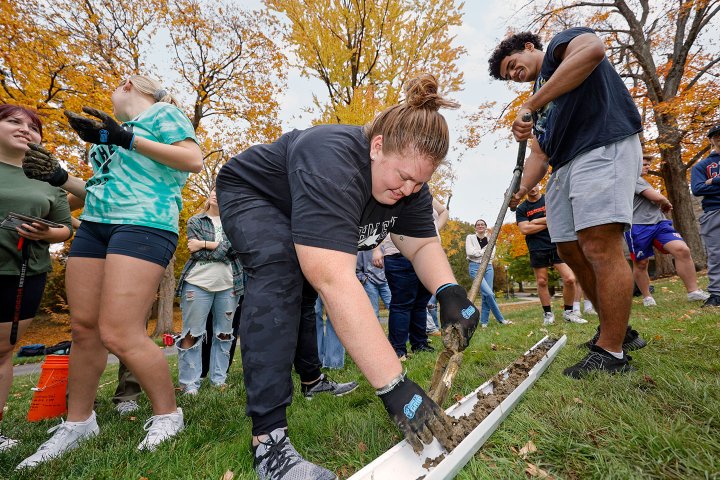
Water, Water Anywhere?
Mizuta and his students are working to solve the mystery of what happened to the historic Sulphur Spring that runs through the northeast section of campus. The spring, one of the most iconic features of OWU’s 200-acre campus, no longer fills the stone basin created to capture it in the 1830s. During that era, a spa hotel was built on what is now campus land to showcase the spring and seduce health-conscious consumers into visiting the site.
When the hotel closed, local residents led by the Rev. Adam Poe purchased the land to support the founding of Ohio Wesleyan in 1942. During OWU’s first 100 years, the Sulphur Spring maintained a prominent role in campus life – the site of both social gatherings and quiet study.
For several years, however, the spring basin has been inexplicably dry.
The Mystery of the Slippery Stream
While walking across campus over the past few years, John Krygier, professor of Environment & Sustainability, noticed an unusually wet section of hillside behind Merrick Hall. The grass was a little different in color, too, and lawncare equipment seemed to slip and slide while working in the area, recalls Krygier, Ph.D.
As he pondered the site, Krygier thought about the history of the hillside, formed as part of a canyon during the last glacial period when huge amounts of meltwater flowed through the area. “After that, the Run shrank, and much of what is now downtown Delaware was wetlands.”
“Dig 10 to 15 feet down,” he says, “and you’ll find 400-million-year-old Ohio shale, where it meets even older limestone known as ‘blue limestone.’ The shale had lots of organic material in it, leading to chemical reactions that produce the distinctive smell.”
Despite his knowledge of the area, Krygier wondered what else lay buried underneath the OWU hillside. So, when Mizuta was looking for a spot to study soil with his students, Krygier suggested the campus site.
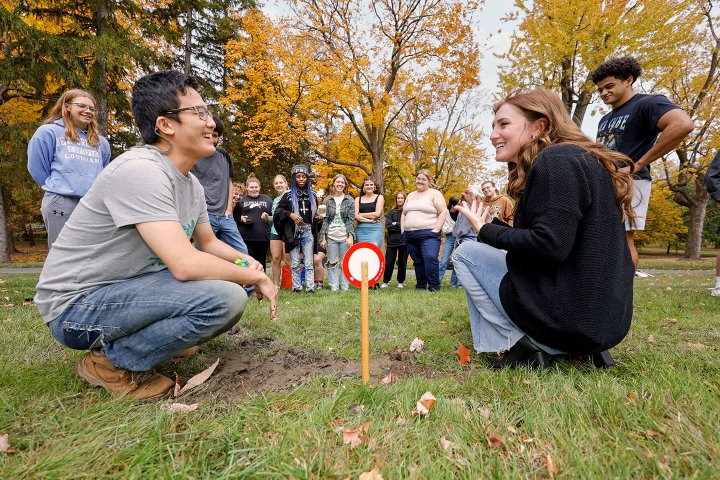
A Scent-Sational Discovery
As Mizuta and his students stand on the hillside during their recent class, he shows them a spot where he previously extracted a core of earth. Water is clearly visible in the deep hole, and he encourages the students to smell the murky liquid.
Natalie Baker ’25 of Fredericktown, Ohio, and Othman Taha ’26 of Dublin, Ohio, take turns leaning down. “I can smell it,” Baker says, noting no need to press her nose any closer to the ground. “It wafts.”
Taha also notices the strong smell that the class ultimately compares to rotten eggs.
“Do you know what smells like rotten eggs?” Mizuta asks.
The answer, he says, is sulfur. And Ohio Wesleyan’s Sulphur Spring is the only such spring recorded in the vicinity. (Other springs identified in the area are iron springs.) So, could this be OWU’s iconic subterranean waterway?
Of Lawn and Limestone
“Why do you think we have water here? Any hypotheses?” Mizuta asks his students. Possibilities include runoff from the buildings that now exist in the area or, perhaps, a waterline leak. To gather more information, Mizuta asked Del-Co Water Company, with the help of water quality intern Graham Steed ’23, to test the water for pH and sulfur levels. The results showed the groundwater has a weaker alkaline level but a sulfur level nearly three times higher than the Delaware Run.
As part of the day’s lesson, Mizuta wants his students to use the auger to extract a fresh core of earth to study the soil quality at different depths. Taha muscles the metal rod into the dirt and extracts sample after sample, watching the soil change in color and density.
After a while, Caroline Schlorb ’25 takes over the digging and discovers groundwater at about 2 feet down. The students also notice the distinctive rotten egg smell is getting stronger.
Then, Mizuta asks the students to ponder his previous findings. The upper soil has a lower pH, but the lower soil has a significantly higher pH level. How is this possible?
With his help, the students puzzle it out: The upper soil is affected by the growing lawn, while the lower soil is impacted by the limestone deposits found throughout the area. Limestone is an alkaline and raises the pH level in the soil. The shale adds the distinctive sulfur smell.
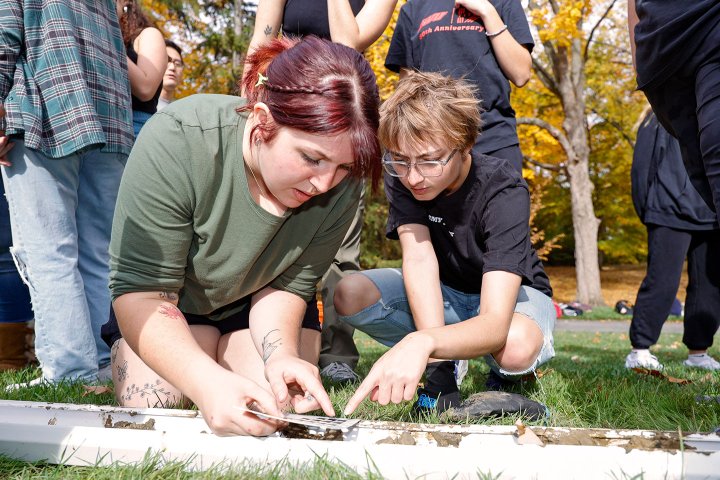
A Spring Runs Through It
Examining all of these variables, Mizuta concludes, “It is the Sulphur Spring. That’s what we’re thinking.”
But where exactly is the relocated spring? Determining a precise location, he says, will require studying the topography of the area, especially how water moves through the terrain.
Krygier adds it might even be possible to restore water flow to the spring’s ornamental basin, but the difficulty of that endeavor is still to be determined. Factors include why the spring moved – was it natural migration? The result of construction? A combination of factors? Rerouting the water flow also depends on whether the mouth of the spring is higher or lower than the basin, he says, and, consequently, how gravity affects the water flow.
And these questions, both professors agree, are mysteries for another day and another investigation.
Learn more about Ohio Wesleyan’s Department of Environment & Sustainability, which offers majors in Environmental Science, Environmental Studies, and Geography, at owu.edu/environment.
